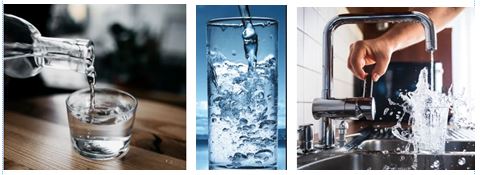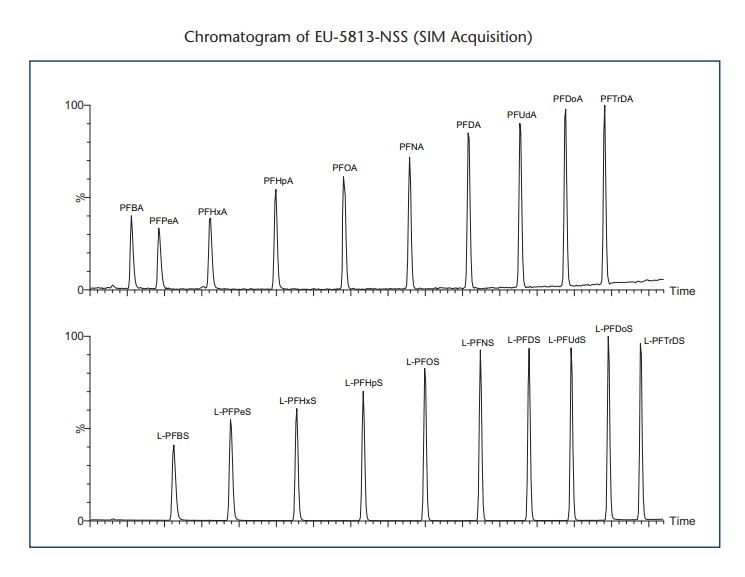How to Prepare a Sample for HPLC Analysis
High-performance liquid chromatography (HPLC) is a analytical chemistry technique used to separate, quantify and identify each component in a mixture. Components are mixed in a pressurized liquid solvent which pass the sample through a HPLC column filled with a solid adsorbent material. Each component in the sample interacts slightly differently with the adsorbent material, causing different flow rates for the different components and leading to the separation of the components as they flow out of the column. The sample is mixed with solvents in varying dilutions and can be pre-filtered before the sample is put into the column to ensure purity of the results, where a sample has to pass through the column at a regular or fast speed a HPLC pump is used.
Sample preparation is vital to high quality reproducable and specific results, often overlooked methodical sample preparation can improve efficiency in the laboratory. Sometimes seen as a laborious task sample preparation isn't always viewed as the most efficient use of time in the laboratory. HPLC and increasingly UHPLC is one of the most commonly used high pecision analytical methods in today's fast paced modern laboratory. A sample needs to be prepared so that it can be directly injected into a HPLC column. Firstly the sample needs to be dissolved in an appropriate solvent; methanol and acetonitrile are favourite choices, for a variety of reasons; there are many guides available as to the proportion on solvent in relation to your sample; some methods are tried and tested some are just a matter of trial and error. Chromatography forums provide a wealth of experience that is freely shared via the Internet.
Depending on the sample to be analysed, whether it be for animal biological fluids, drinks, food, human biological fluids, petrochemical residues, pharmaceutical analysis, toxicological residues, waste waters, the sample will need to be filtered prioir to injection. Solid Phase Extraction (SPE) tubes provide an excellent clean up method or a syringe filter with a suitable membrane to ensure that your sample is free of particles that may cause intereference during detection and will prevent blockages to your column. Syringe filters are the most efficient method of pre-filtering the sample for sample with complex properties or for small volumes, they come in a variety of membranes and differing porisities. It is important that the sample is a clean as possible before it is introduced to the column, taking time at this stage to ensure that the sample is a clean as it can be is worth the extra time.
Problems with peaks, particularly Ghost Peaks can be detected either with the first injection or problems may present themselves during the course of your analysis leading to a gradual deterioration in your results. A poorly prepared sample may lead to you having to repeat the whole process, it may even involve you having to clean the column if the sample is too contaminated. Taking extra time to clean the sample will save valuable laboratory time in the long run.
A clean sample will help to ensure:
- High sensitivity of the HPLC Column
- Accurate, reproducable results
- Fewer false-positive peaks
- Reduced leachables
- Low background noise
- No blockages in the column
Using ultra pure water can also have its advantage particularly for pharmaceutical analysis where the need for the purest water is paramount. Scientific research has proved that more than 80% of problems experienced during HPLC analysis are directly attributable to water purity. Biosolve Ultra Pure water is supplied by Grehoyhound Chromatography in the UK and to laboratories world-wide. With less than 0.0002%w/w residues after evaporation, the HPLC grade water from Biosolve is filtered through 0.2µm and bottled under inert gas.
Some scientists prefer to use an automated sample preparation methods to eliminate human error, samples can become unreliable where dilution has been carried out manually use hand to eye determination of sample size and not a regulated reproduction of a sample using a elctronic pipette, for example. Automated sample preparation can aid productivity by speeding up the analysis process, this is partciularly useful for UHPLC where speed of analysis under high pressure is essential. Triple quad systems provide increased sensitivity at lower analyte concentrations, allowing high throughput of smaples. The laboratory environment is increasingly complex, particularly in the field of biological research and analysis. The need for research and drug development in the area of Cancer research alone is driving new developments every day at the edge of treatment devlopment.
PFAS and Other Toxic Chemicals in our Drinking Water
For over 30 years the European Union have worked tirelessly to protect the integrity of our drinking water. EU officials have recently reached a provisional agreement to update the Union's 1998 Drinking Water Directive to tighten up the permissible limits allowed for both PFAS and several other drinking water contaminants, including bisphenol-A, microplastics, lead and chromium. The at the time of writing the European Parliament and Council are still to formally approve the proposal.
European drinking water standards currently far exceed the standards set in the United States but this is a changing picture as state by state new instances of contaminants are emerging. Currently, the U.S. Environmental Protection Agency has only issued a nonenforceable health advisory of 70 ppt for PFOA, formerly used by DuPont to make Teflon, and PFOS, formerly an ingredient in 3M’s Scotchgard. Those compounds are no longer manufactured in the U.S., but they and other PFAS contaminate the drinking water for an estimated 110 million Americans. PFOA, PFOS and some other PFAS chemicals have been linked to cancer, thyroid disease, reproductive and immune system problems, and other health harms.
The european Parliament and the Council of the European Union have released new requirements for the analysis of per- and perfluoroalkyl substances (PFAS) in water intended for human consumption (5813/20). This amendment to Council Directive 98/83/EC included perfluoroalkanesulfonates that are not commercially available. In response to this Wellington Labroatories, Canada, is pleased to announce that its chemists have synthesized, purified, characterized and prepared accurate certified reference standards of the required substances: sodium perfluoro-1-undecanesulfonate (L-PFUds) and sodium perfluoro-1-tridecanesulfonate (L-PFTrDS). Wellington Laboratories have also prepared a native solution/mixture (EU-5813-NSS) that contains all of the PFAS listed in the drinking water directive (5813/20) for your convenience. This solution/mixture can be used in conjunction with two of Wellington's existing mass-labelled PFAS mixtures to easily prepare a calibration set for quantification.
Suggested extraction standard mixture : MPFAC-C-ES
Suggested injection standard mixture: MPFAC-C-IS
CONTACT US
Tel: +44 (0) 151 649 4000
Email: marketing@greyhoundchrom.com
FOLLOW US
YOU MAY ALSO BE INTERESTED IN OUR NEWSLETTER





















